How to Stop Rug Slipping on Carpet: A Complete Guide

Rugs sliding on carpets pose safety hazards and frustrate homeowners daily. People constantly deal with rugs that bunch up and move around. These issues create dangerous tripping hazards, particularly in busy areas of the house. You need to know the quickest way to stop rug slipping on carpet to keep your home safe and organised.
This piece shows you proven ways to keep rugs securely in place on carpeted surfaces. You'll find affordable solutions ranging from the right rug pads to double-sided tape and smart furniture placement. The content covers everything from DIY fixes to expert tips for various carpet types. You'll also learn maintenance strategies that help your rugs stay firmly in position for years to come.
Choosing the Right Rug for Carpet
You need to know how different materials and construction features work together when choosing the right rug for carpeted surfaces. The best choice will reduce movement by a lot and boost safety.
Material considerations
Wool emerges as a premium choice to place rugs on carpets. This natural fibre combines durability with comfort and works great in high-traffic areas where resilience matters. Budget-conscious homeowners will find polypropylene rugs appealing since they resist stains well and need minimal maintenance. Nylon rugs strike an ideal balance between durability and visual appeal. Their superior elasticity helps maintain shape even with heavy furniture on top.
Weight and thickness
A rug's weight plays a significant role in keeping it stable on carpet. Premium quality rugs with higher density (around 250g/m²) provide:
- Better stability with minimal movement
- Superior sound absorption qualities
- Extra cushioning comfort
- Longer lasting durability
Backing types
The backing material substantially affects a rug's grip on carpet. Natural latex backing provides excellent stability and preserves the weave's integrity. Jute backing delivers environmental benefits and natural grip but doesn't work well in humid environments. Rubber or latex backing creates superior grip on both hard and carpeted surfaces to ensure maximum stability, though wear and tear might require eventual replacement.

Non-Slip Rug Pads: Your First Line of Defence
Rug pads create a secure foundation that keeps area rugs stable on carpeted surfaces. Quality rug pads protect your rug's life and the carpet beneath it while preventing unwanted movement.
Benefits of rug pads
A well-placed rug pad provides several key benefits:
- Protection against friction damage to both rug and carpet fibres
- Better cushioning that makes walking more comfortable
- Better sound absorption throughout your living space
- Protection from dye bleeding between rug and carpet
Selecting the appropriate pad
Material selection plays a significant role in choosing a rug pad for carpeted surfaces. Natural rubber and felt combinations provide optimal grip and longevity. Thinner rugs need a thicker pad for cushioning, while plush rugs work best with a slim, non-slip pad. PVC-based pads should be avoided because they degrade quickly and might damage your carpet.
Proper installation techniques
Accurate measurement is the first step in installation. The rug pad should be approximately 2-3 centimetres smaller than the rug on all sides. The pad works best when you place its rubber side against the carpet and felt side touching the rug. This setup will give maximum grip and protects both surfaces. You should check and adjust the pad's position regularly to keep it working effectively.
Utilising Rug Tape and Adhesives
Rug tape is a reliable way to secure rugs on carpeted surfaces and comes in both temporary and permanent options that match your needs.
Types of rug tape
You can find several specialised varieties of rug tape that work best for different uses:
- Heavy-duty tape: This tape works well both indoors and outdoors and is a great way to get multiple surface coverage
- Silicone-based tape: This tape lasts longer than others and won't leave marks on your carpet's fibres
- Washable rug tape: You can reuse this tape after cleaning it with water
- Double-sided fabric tape: This tape has strong adhesive on both sides to keep rugs firmly in place
Application methods
A successful installation needs attention to detail. Clean both the rug and carpet thoroughly before you begin. Next, cut the tape into appropriate lengths and place them around the rug's edges. Create an 'X' pattern every 30 centimetres to add stability. The rug needs firm pressure where you applied the tape to ensure strong contact between the surfaces.
Removal and carpet protection
The proper technique at the time of rug tape removal protects carpet fibres effectively. A low-heat setting with an iron over packing paper helps loosen stubborn adhesive bonds. Natural solutions like olive oil work well to remove residue from certain tapes. The carpet's fibres stay safer with silicone-based products than synthetic rubber options that often leave sticky residue behind.
Furniture Placement Strategies
Strategic furniture placement creates stable spaces and secures rugs on carpeted surfaces. This design approach combines visual appeal with functionality to enhance your interior spaces.
Using furniture to secure rugs
Heavy furniture naturally anchors area rugs and keeps them stable without extra materials. The best way to secure rugs involves placing substantial pieces like sofas and upholstered chairs along the rug's edges and corners. Your furniture should ideally secure all four sides of the rug, though anchoring two opposite sides is enough when you use heavy pieces.
Balancing aesthetics and functionality
A successful furniture layout blends visual appeal with rug stability perfectly. Here are the guidelines you should think over:
- Heavy furniture pieces should frame the seating arrangement
- The rug must extend past your furniture's edges
- Walking paths need to stay clear without compromising stability
- A coffee table or ottoman in the centre provides extra anchoring
Adjusting for different room layouts
Each room needs its own special approach to furniture placement. Bedroom rugs work best when positioned sideways and extended from about one-third down from the headboard. Your living area's rug should serve as a visual anchor that creates a unified space connecting all furniture pieces together. The ideal placement takes traffic flow and the room's focal points into account, which helps define specific zones while keeping everything stable.
Innovative Anti-Slip Solutions
Technology today offers innovative ways to keep rugs from moving on carpeted surfaces that combine simple installation with great results.
Velcro strips and their application
Heavy-duty Velcro tape is a great way to secure rugs to carpet. These water-resistant strips stick strongly but remain gentle on surfaces. You need clean, dry surfaces for installation, and the adhesive becomes strongest after 24 hours. This method works really well especially when you have larger rugs that need frequent adjustments.
Silicone caulk method
Silicone caulk offers an economical DIY solution to secure rugs. The process requires applying acrylic caulk in a pattern on the rug's underside to create a grippy surface. Lines of caulk should be placed three to six inches apart and allowed to dry for 24 hours. This simple technique improves safety and protects both your rug and floor.
Rug corner weights
Decorative rug weights look great and keep your rugs secure. You can place these weights along the corners and edges to stop rugs from moving in busy areas. Magnetic rug grippers are a modern solution that works even better. These grippers come with removable, washable tabs that stay hidden and keep your rug flat. This setup works especially when you have light rugs that move around too much.

Maintaining Rug Stability Over Time
Regular maintenance will give your rugs lasting stability when you place them on carpeted surfaces. Taking care of your rug consistently protects its appearance and helps it grip better while preventing problems like bunching and sliding.
Regular cleaning and inspection
Your rug's stability depends on proper cleaning routines. [Approximately 80% of dirt is removed through regular hoovering up, while 20% remains trapped in rug fibres]. Expert cleaners recommend you vacuum high-traffic areas twice weekly. A simple floor nozzle attachment works better than a spinning brush vacuum cleaner. This method keeps your rug clean and substantially extends its lifespan.
Addressing curled edges and corners
Carpet fibres compress and decompress beneath rugs and create curled edges. Regular rotation of rugs by 180 degrees helps prevent this issue in high-traffic areas. A gentle application of moisture and pressure can relax the fibres that stubbornly remain curled. Quick action with spot cleaning works best using either:
- Soda water and patting dry
- A mixture of one part white vinegar in ten parts warm water
Seasonal adjustments
Environmental changes substantially affect rug stability. [Different weather conditions bring unique challenges, such as increased dust during dry seasons and heightened humidity in summer]. Experts recommend these steps to maintain optimal grip:
- Store off-season rugs in clean, dry spaces
- Clean the base carpet before changing seasonal rugs
- Use proper rug pads for extra stability in humid conditions
Conclusion
Securing rugs on carpet just needs a smart mix of the right selection, installation methods and upkeep. Quality materials, suitable backing types and reliable non-slip solutions help create stable rug placement. Your rugs will stay in place when you arrange furniture strategically and use modern solutions like silicone caulk and corner weights. These methods combine to give you safe and attractive living spaces without shifting or bunching rugs.
Regular maintenance is the life-blood of keeping rugs stable on carpeted surfaces. Your rugs will stay secure and look great when you follow proper cleaning routines, make seasonal adjustments and fix curled edges quickly. Homeowners who use these detailed strategies enjoy better safety and longer-lasting rugs. The work you put into proper installation and maintenance pays off for years.
Stop rug slipping on carpet
Nobody likes to deal with rugs that keep moving around on carpet. You can fix this common problem with several proven methods. Rugs tend to move because of carpet pile direction and regular foot traffic, but the right combination of solutions will keep them stable.
A carpet-to-carpet non-slip rug pad works best among all options. It has a dual-layer design with natural rubber and felt. The felt grabs carpet fibres while the rubber top holds the rug firmly. This creates a stable foundation and helps both surfaces last longer [cited from document 117].
Here are quick solutions you can try right away:
- Anti-slip rug pads: Perfect for all carpet types, especially high-pile
- Double-sided tape: Works well for temporary fixes, but needs careful removal
- Silicone caulk: Great for budget-friendly rugs with excellent grip
- Furniture anchoring: Best choice for large area rugs
The best choice for double-sided tape is products with silicone adhesive. These won't leave residue or harm carpet fibres during removal [cited from document 124]. Traditional rug grippers might not work well with high-pile carpets because they move along with the longer pile [cited from document 125].
Your results will be best if you choose the right rug and securing method. Quality heavy rugs with premium backing resist movement better than lighter ones, especially when you use proper non-slip solutions.
Tape to stop rug moving on carpet
Double-sided carpet tape is a practical solution to secure rugs on carpeted surfaces, and many options are accessible to more people with different needs. Heavy-duty double-sided carpet tape delivers industrial-grade adhesion that covers approximately 80-100 tiles per 20m roll.
Different tape varieties serve specific purposes:
- High-strength blue film adhesive tape works best in heavy traffic areas
- White cotton cloth tape suits temporary installations
- Silicone-based options remove without leaving residue
- Exhibition-grade tape meets professional requirements
The tape's installation needs careful attention. Both surfaces must be clean and dry before installation. The tape should be cut into 50mm lengths and applied to the rug's four corners. Carpet tile tackifier adhesive combined with double-sided tape works best in larger areas with more than 100 tiles.
Silicone-based tapes last longer than rubber alternatives, especially when you have to protect carpet fibres. Water can clean and reactivate these tapes easily, which makes them perfect for regular maintenance. The tape works better when applied generously around the perimeter and in doorways or entrance areas.
White cotton cloth tape provides excellent grip and removes easily during temporary installations. This option works great for events, exhibitions, and home applications where users need periodic repositioning. The tape creates a safer environment by preventing slips and movement without permanent installation.
What is the best rug to carpet Gripper
High-Performance Premium underlay leads the premium carpet grip solutions market with its innovative dual-fibre technology. This advanced product packs 12 ounces of fibre per square yard, substantially outperforming other products that typically contain only 3-4 ounces.
The groundbreaking Rug Gripper™, available exclusively in the UK, delivers exceptional stability through advanced engineering. A specially created water-based pressure-sensitive dry adhesive coating on both sides makes it highly effective. Users can expect these important benefits:
- No wrinkling and bunching
- Smooth, neat appearance
- Rug's integrity stays intact
- Better vacuum cleaning results
- Quick and easy repositioning
This versatile product works well in homes and commercial spaces, with a standard roll size of 25ft x 6". The black side of High-Performance Premium underlay grips any textile floor covering effectively, making it an excellent choice for fitted wall-to-wall carpet installations.
This gripper's unique technology allows quick release when lifted while keeping a strong hold during use. Your flooring surfaces stay protected from oxidation and discoloration - a common worry with long-term carpet protection. The underlay's body and density resist horizontal movement that usually causes buckling under rugs.
How to stop rug from sliding on wood floor
A natural rubber rug pad with felt backing helps keep rugs in place and protects hardwood floors from scratches and stains [cited from document 157]. Natural rubber works better than synthetic materials because it won't react with or discolour floor finishes [cited from document 154].
These proven methods will secure your rugs on wooden surfaces:
- Premium rug pads: Felt with natural rubber backing
- Silicone caulk: Perfect for high-traffic areas
- Heavy-duty tape: Works for temporary fixes
- Velcro strips: Great for smaller rugs
Felt rug pads with natural rubber backing give you better grip than plastic and PVC options [cited from document 154]. These pads protect against discoloration and damage while gripping the floor like tyres on a road [cited from document 157].
Silicone caulk works best in high-traffic areas like entryways [cited from document 157]. But dried adhesives might leave residue, so this option suits low-traffic areas or places where rugs need to stay put [cited from document 154].
Many hotels and businesses use permanent installation methods to keep rugs stable [cited from document 162]. Homes need more flexible solutions that allow you to clean and maintain floors regularly. This approach protects both the rug and wooden surface while letting you move things around as needed.
How to stop rug from sliding on carpet DIY
DIY enthusiasts have found budget-friendly ways to keep rugs from moving on carpeted surfaces. These homemade fixes work just as well as store-bought products and you retain control over the process.
The silicone sealant method has become a favourite because it lasts long and you can apply it easily. You'll need these materials:
- 100% Silicone Sealant
- Caulk gun
- Spatula or paint scraper
- Clean workspace
The best way to apply the sealant is in a grid pattern on the rug's underside. Make sure you cover the edges and corners evenly. Let it dry for 12-24 hours completely. This method works great for lightweight rugs, though some people need to add extra corner support after a few months.
The hot glue technique is another great fix. You'll need to run hot glue along the rug's entire border and add lines through the middle to improve grip. This simple solution works well, but keep in mind that it might affect how you can wash the rug.
The Anti-Slip Rug to Carpet Underlay gives you a safe, non-toxic option that you can move around whenever needed. This solution is great because it doesn't need any glue and won't harm your rug or carpet.
These DIY methods have shown amazing results in real-life application. Many people say they still work great even after a year of use. You might need to mix methods to get the best results, like using corner grippers with silicone sealant especially when you have lightweight rugs that keep moving.
Grips to stop rugs moving on carpet
Quality rug grips are a great way to get carpet-to-carpet stability. The High-Performance Premium underlay excels as a non-skid solution that grips both rug and carpet surfaces firmly. Your rugs stay in place and prevent accidents. This premium product keeps your rug looking great and reduces fall risks.
The Slip-Stop Magic Stop Rug Pad combines polyester construction with adhesive backing that works perfectly on carpets. You'll appreciate these benefits:
- Quick and easy sizing adjustments
- Better vacuum cleaning results
- Less corner curling
- Reliable grip in busy areas
These specialised grips last long and work well in different settings. The thin polyester design provides excellent grip and lets surfaces breathe properly. Tests prove these grips work especially well in rooms with furniture because they keep rugs stable even under heavy weight.
Quality rug control products solve common problems like:
- Curling corners and lifting edges
- Rugs that move and creep on carpet
- Pushing against furniture
- Unstable rugs in high-traffic spots
Your space's specific needs should guide your grip choice. High-Performance Premium products grip strongly and protect both surfaces. They're worth the investment if you want long-lasting stability and safety.
Why do rugs move on carpet
The science behind rug movement on carpeted surfaces involves several connected factors. Rugs tend to move because they follow the carpet's pile movement as people walk on them. Each footstep pushes the carpet pile, which then makes the rug move along with it, creating a gradual shifting effect.
Carpet installers usually point the pile toward the entryway to boost colour richness. This practise unintentionally makes rugs slide in that direction. Rugs slide more easily on carpets with longer and plushier fibres because they provide nowhere near enough grip.
Here's what makes rugs move:
- Pile Interaction: Your carpet pile's compression affects how stable the rug stays
- Material Friction: Rugs made of slippery materials tend to slide more
- Environmental Factors: Dirt and debris make surfaces less grippy
- Size Impact: Lighter, smaller rugs move around more easily
Your choice of footwear substantially affects rug stability. Walking on carpet compresses its fibres in specific directions. Shoes with strong grip, like trainers, can actually accelerate the mat's movement across the carpet.
Rugs naturally slide in the direction of the pile's lean on plush carpets. This movement becomes obvious in areas with heavy foot traffic where people walking creates a steady pushing force. The core team should know that smaller mats move more often because they're lighter than larger, heavier ones that stay in place better.
Double Sided Rug Tape for Carpet
Carpet tape is a sophisticated way to secure rugs. It uses a cloth-based film with resilient adhesive backing on both sides. This innovative design creates strong bonds between the rug and carpet surface that stays stable over time.
Premium silicone-based carpet tape comes with several distinct advantages:
- You get mess-free application without liquid adhesives
- Strong adhesion works on surfaces of all types
- Remove it without leaving residue
- Antimicrobial agents boost protection
You need precision to get optimal results during application. Start by cutting the right size tape sections and stick them to the floor beneath the rug's edge. Then peel back the protective cover to expose the second adhesive surface. The final step needs you to press down firmly on the rug to create proper contact with the tape.
XFasten Double-Sided Carpet Tape outperforms its competitors because of its silicone composition that shows superior durability compared to rubber-based alternatives. The formulation protects floor surfaces while keeping strong adhesion, making it perfect for temporary flooring installations over carpet.
Ultratape Rhino rug tape has become popular due to its versatility and effectiveness. Its specialised water-based pressure-sensitive adhesive contains antimicrobial agents that let you reposition when needed. This professional-grade solution works great in high-traffic areas like stairways and kitchen spaces. The tape also makes vacuum cleaning easier without moving the rug from its position.
The quickest way to get the best performance is to apply carpet tape around the rug's perimeter. Add extra strips in areas that see frequent movement or stress. This method will give a detailed coverage while your rug's natural appearance and feel stay intact.
how to stop my rug moving on carpet
Stable rugs need a detailed approach that combines several proven methods. You need to apply these solutions step by step while thinking over your room's conditions and your rug's features.
A multi-layered approach to keep your rug stable needs three main things:
- Primary anchoring method (rug pad or gripper)
- Secondary reinforcement (corner weights or furniture placement)
- Regular maintenance routine
Getting the best results starts with a full picture of your space. Your foot traffic patterns, humidity levels, and carpet pile height will help you pick the right mix of stabilising methods.
Here's how to make it work:
- Clean both rug and carpet surfaces well
- Apply chosen primary anchoring method
- Install secondary reinforcement points
- Test stability with gentle pressure
- Monitor how well it works for 24-48 hours
Using multiple methods works better than just one solution. To name just one example, a quality rug pad combined with smart furniture placement gives you better stability than either method alone. This collaborative effort tackles several movement issues at once and improves your rug's security.
Maintenance is vital for long-term stability. Hoovering up debris weekly stops it from building up between surfaces. Monthly checks help ensure your anchoring methods still work well. You can make seasonal adjustments based on humidity and temperature changes that might affect your rug's behaviour.
FAQs
How to stop a rug from bunching up on carpet?
Prevent rug bunching by using rug grippers or double-sided carpet tape along the edges and corners of the rug.
How do I make my area rug not slide on the carpet?
Secure your area rug on carpet using rug anchors or non-slip rug pads designed for use on carpeted surfaces.
How to keep floor mats from sliding on carpet?
Keep floor mats in place on carpet by using silicone caulk on the underside or attaching velcro strips to both the mat and carpet.
How do I keep my area rug from rolling up on the carpet?
Prevent rug rolling by using rug corner grippers or weighted objects on the corners to hold them down.
How do you stop a rug from moving on a carpet?
Stop rug movement by applying rug-to-carpet tape or using non-slip rug underlay designed for carpeted surfaces.
How to make a rug lay flat on carpet?
Ensure a rug lays flat by reverse rolling it, using rug weights, or applying heat with an iron or steamer (with caution).
Why does rug ripple on carpet?
Rug rippling occurs due to moisture absorption, uneven wear, or improper installation. Ensure proper placement and use rug pads to minimize this issue.
How to fix a carpet that is bunching up?
Fix bunching carpet by re-stretching it professionally or using a carpet stretcher tool for DIY solutions.
How do you keep an area rug on carpet?
Keep an area rug in place on carpet using a combination of rug pads, corner grippers, and rug-to-carpet tape.
How to stop rug from bunching on carpet reddit?
Reddit users suggest using rug grippers, double-sided tape, or corkboard squares under the corners to prevent bunching.
What can you use instead of a rug pad?
Alternatives to rug pads include non-slip shelf liners, rubber mesh, or felt pads cut to size.
How do I make my rug not bunch up on the carpet?
Prevent rug bunching by using rug anchors, corner weights, or a non-slip rug pad designed for use on carpet.
How to make a rug grippy?
Increase rug grip by applying silicone caulk to the underside in a grid pattern or using spray-on rug backing.
How do I keep my rug from slipping on the floor?
Prevent rug slipping on floors by using non-slip rug pads, rug grippers, or double-sided rug tape.
How do I get my floor mats to stay in place?
Secure floor mats using anti-slip backing spray, velcro strips, or double-sided carpet tape.
How to stop yoga mat from slipping on carpet?
Keep a yoga mat in place on carpet by using a yoga towel on top or rug grippers underneath.
Does carpet tape work on carpet?
Yes, carpet tape designed for rug-to-carpet use can effectively hold rugs in place on carpeted surfaces.
How do you stop a rug moving on a carpet?
Prevent rug movement on carpet by using a combination of rug pads, corner grippers, and rug-to-carpet tape.
How do you get a rug to sit on carpet?
Ensure a rug sits properly on carpet by using a non-slip rug pad and smoothing out any wrinkles or bumps during installation.
How to make an area rug lay flat?
Flatten an area rug by reverse rolling it, using rug weights, or applying gentle heat with a steamer or iron (use caution).
How to keep a rug from rolling up on carpet?
Prevent rug rolling by using rug corner grippers, weighted objects on corners, or rug-to-carpet tape along edges.
How to secure area rug to carpet?
Secure an area rug to carpet using rug anchors, non-slip rug pads, or rug-to-carpet tape along the edges and corners.
Is it dumb to put a rug over carpet?
Putting a rug over carpet is not dumb; it can add style, define spaces, and protect high-traffic areas of your carpet.
How do you get a rug from bunching up on carpet?
Prevent rug bunching by using rug grippers, double-sided tape, or a non-slip rug pad designed for carpeted surfaces.
How to make a rug stay in place?
Keep a rug in place using rug pads, corner grippers, rug-to-carpet tape, or weighted objects on the corners.
Why does my area rug keep moving?
Area rugs move due to foot traffic, lack of proper anchoring, or incompatible surfaces. Use appropriate rug pads or grippers to prevent movement.
Why won't my rug stay flat on carpet?
Rugs may not stay flat on carpet due to moisture absorption, uneven wear, or improper installation. Use rug pads and proper placement techniques to address this issue.
How do you flatten a bumpy rug?
Flatten a bumpy rug by reverse rolling it, using rug weights, or applying gentle heat with a steamer or iron (use caution).
Do I need a rug pad on carpet?
While not always necessary, a rug pad on carpet can prevent slipping, reduce bunching, and extend the life of both the rug and underlying carpet.
How to fix rug ripples?
Fix rug ripples by re-stretching the rug, using rug weights, or applying gentle heat with a steamer or iron (use caution).
How to fix a rug to carpet?
Secure a rug to carpet using rug-to-carpet tape, rug anchors, or non-slip rug pads designed for carpeted surfaces.
Do carpet ripples go away?
Carpet ripples may not go away on their own. Professional re-stretching or using a carpet stretcher tool can help eliminate ripples.
How to fix a rug that is curling up?
Fix curling rug corners by using rug corner grippers, applying weights, or using double-sided tape to secure them.
How do you get ripples out of carpet without a stretcher?
Remove carpet ripples without a stretcher by using a knee kicker tool, walking on the ripples, or applying heat with an iron and damp cloth (use caution).
How to get waves out of a rug?
Remove waves from a rug by reverse rolling it, using rug weights, or applying gentle heat with a steamer or iron (use caution).
How to make a rug not move on carpet?
Prevent rug movement on carpet by using rug-to-carpet tape, non-slip rug pads, or rug anchors designed for carpeted surfaces.
How do you flatten a rug on top of carpet?
Flatten a rug on carpet by reverse rolling it, using rug weights, or applying gentle heat with a steamer or iron (use caution).
How to make a thin rug lay flat on carpet?
Help a thin rug lay flat on carpet by using a non-slip rug pad, rug-to-carpet tape, or corner grippers to secure it in place.
Why does rug ripple on carpet?
Rug rippling occurs due to moisture absorption, uneven wear, or improper installation. Use proper placement techniques and rug pads to minimize this issue.
Why do rugs curl up on carpet?
Rugs curl up on carpet due to uneven tension, moisture absorption, or manufacturing defects. Use corner grippers or weights to prevent curling.
How to fix rug buckling?
Fix rug buckling by re-stretching the rug, using rug weights, or applying gentle heat with a steamer or iron (use caution).
Why is rug moving on carpet?
Rug movement on carpet occurs due to foot traffic, lack of proper anchoring, or incompatible surfaces. Use appropriate rug pads or grippers to prevent movement.
How to keep floor mats from sliding on carpet?
Prevent floor mat sliding on carpet by using silicone caulk on the underside or attaching velcro strips to both the mat and carpet.
How do you keep an area rug on carpet?
Secure an area rug on carpet using a combination of rug pads, corner grippers, and rug-to-carpet tape.
How to stop a rug from bunching on carpet?
Prevent rug bunching by using rug grippers or double-sided carpet tape along the edges and corners of the rug.
How do you keep a rug from rolling up on carpet?
Stop rug rolling by using rug corner grippers, weighted objects on corners, or rug-to-carpet tape along edges.
Does rug gripper tape work on carpet?
Yes, rug gripper tape designed for carpet use can effectively hold rugs in place on carpeted surfaces.
How to stop rugs moving on carpets in UK DIY?
UK DIY enthusiasts recommend using rug grippers, non-slip rug underlay, or rug-to-carpet tape to prevent rug movement on carpets.
How do I make my area rug not slide on the carpet?
Prevent area rug sliding by using rug anchors or non-slip rug pads designed specifically for use on carpeted surfaces.
How do you get a mat to stay on carpet?
Secure a mat on carpet by using silicone caulk on the underside, attaching velcro strips, or using double-sided carpet tape.
How to stop mats from slipping?
Prevent mat slipping by using anti-slip backing spray, rug grippers, or double-sided tape suitable for your floor type.
How to fix a rolled up rug?
Fix a rolled up rug by reverse rolling it, using rug weights, or applying gentle heat with a steamer or iron (use caution).
How to flatten a rug on carpet?
Flatten a rug on carpet by reverse rolling it, using rug weights, or applying gentle heat with a steamer or iron (use caution).
How do you keep carpet rolled up?
Keep carpet rolled up using heavy-duty rubber bands, carpet straps, or plastic wrap to maintain its shape during storage.
How do you hold an area rug on carpet?
Hold an area rug on carpet using a combination of rug pads, corner grippers, and rug-to-carpet tape for maximum security.
Can you iron a rug to flatten it?
Yes, you can iron a rug to flatten it, but use caution. Place a damp cloth over the rug and use low heat to avoid damaging the fibers.
How do I stop my rug from rippling on my carpet?
Prevent rug rippling by using a non-slip rug pad, ensuring proper installation, and minimizing moisture exposure.
How do I keep my rug from curling up on the carpet?
Stop rug curling by using rug corner grippers, applying weights to corners, or using double-sided tape to secure edges.
Is it dumb to put a rug over carpet?
Putting a rug over carpet is not dumb; it can add style, define spaces, and protect high-traffic areas of your carpet.
How to make rugs not slip?
Prevent rug slipping by using non-slip rug pads, rug grippers, double-sided rug tape, or anti-slip spray on the rug backing.
How to fix a carpet that is bunching up?
Fix bunching carpet by re-stretching it professionally or using a carpet stretcher tool for DIY solutions.
How to stabilize furniture on carpet?
Stabilize furniture on carpet using furniture grippers, felt pads, or plastic carpet protectors under the legs.
How to stop a rug from sliding on carpet?
To prevent rug slippage on carpet, use a non-slip rug pad designed for carpet surfaces. Alternatively, apply double-sided carpet tape along the rug's edges or use silicone caulk on the rug's backing for a more permanent solution.
What is the best way to secure a rug to carpet?
The best method to secure a rug to carpet is using a high-quality rug pad specifically designed for carpet-to-carpet grip. These pads provide excellent traction and can be easily trimmed to fit your rug's dimensions.
What can I put under my rug so it doesn't slip?
To prevent slipping, place a rubber mesh rug pad or felt and rubber combination pad under your rug. For a budget-friendly option, consider using non-slip shelf liners or area rug gripper tape.
How to stop rugs moving on carpet in UK DIY?
In the UK, popular DIY solutions include using rug grippers available at home improvement stores, applying hook and loop fasteners (Velcro) to the rug and carpet, or using carpet-to-carpet tape designed for this specific purpose.
How can I make a rug non-slip?
Make a rug non-slip by:
- Using a quality non-slip rug pad
- Applying rug corner grippers
- Adding silicone caulk beads to the rug's backing
- Using double-sided carpet tape
- Attaching rubber shelf liner to the rug's underside
What grips stop rugs moving on carpet?
Effective grips to stop rug movement on carpet include:
- Rubber mesh rug pads
- Felt and rubber combination pads
- Rug corner grippers
- Non-slip rug grippers
- Hook and loop fasteners (Velcro)
Do I need a rug pad for carpet?
While not always necessary, a rug pad is highly recommended for carpets. It provides additional grip, prevents bunching, adds cushioning, and protects both the rug and underlying carpet from wear and tear.
What is the best anti slip rug pad?
The best anti-slip rug pad for carpets is typically a thin, mesh-style pad made of PVC or natural rubber. Look for pads specifically designed for carpet-to-carpet use, offering strong grip without damaging the underlying carpet fibers.
How to stop floor mats from sliding?
To prevent floor mats from sliding:
- Use non-skid backing or apply non-slip spray
- Place rubber gripper pads underneath
- Apply double-sided tape to the mat's corners
- Use velcro strips for easy removal and cleaning
- Consider weighted mats for high-traffic areas
How to install grip it magic stop?
To install Grip It Magic Stop:
- Clean the rug's underside thoroughly
- Cut the Grip It Magic Stop to fit your rug's shape
- Peel off the adhesive backing
- Apply to the rug's corners and edges
- Press firmly to ensure proper adhesion
- Allow the adhesive to set for 24 hours before use
How do you make a rug not slip?
To prevent rug slippage, use non-slip rug pads or rug grippers underneath. These provide friction between the rug and floor. For a DIY solution, apply silicone caulk in a grid pattern on the rug's underside. Ensure the rug is the right size for the space and consider using double-sided carpet tape for extra security.
What is the best thing to use to keep rugs from sliding?
The most effective solution for keeping rugs in place is a high-quality non-slip rug pad. These pads are designed to grip both the floor and the rug, preventing movement. For smaller rugs, corner grippers or rug tape can be equally effective. Choose products specifically designed for your floor type to avoid damage.
Why do rugs stick to the floor?
Rugs may stick to the floor due to adhesive residue from rug pads or tape, moisture buildup causing suction, or chemical reactions between the rug backing and floor finish. In some cases, static electricity can cause temporary sticking. Regular cleaning and proper ventilation can help prevent these issues.
How do I keep my rug from sliding on laminate flooring?
For laminate floors, use a rubber-backed rug pad cut slightly smaller than your rug. Silicone caulk strips on the rug's underside can also provide grip without damaging the laminate. Avoid adhesive products that might leave residue. Consider rug anchors that work by weight rather than adhesion for a damage-free solution.
What is the best way to stop a rug slipping?
The best method to stop rug slippage is using a combination of techniques. Start with a high-quality non-slip pad, add corner grippers for extra security, and ensure the rug is the appropriate size for the space. For persistent problems, consider rug anchors or furniture placement to hold the rug in place.
Why is my rug slipping?
Rug slippage often occurs due to smooth floor surfaces, incorrect rug size, or lack of proper underlay. Factors like high traffic, thin rug material, or curled edges can exacerbate the problem. Sometimes, the rug's backing material may not provide enough friction with your specific floor type.
How do you keep a rug from moving on a wood floor?
To secure a rug on a wood floor, use a natural rubber rug pad that won't damage the finish. Rug grippers or corner stays can provide additional stability. For a more permanent solution, consider nail-on rug grippers along the rug's edges. Always avoid adhesive products that might harm the wood's finish.
How to use rug grippers?
To use rug grippers, first clean both the floor and rug underside. Place the grippers in each corner and along the edges of the rug, ensuring they make contact with both the rug and floor. Press firmly to activate the grip. For larger rugs, add grippers in the center for extra stability. Replace grippers when they lose effectiveness.
How do I keep my rug from sliding on my concrete floor?
For concrete floors, use a heavy-duty rubber rug pad cut to size. Double-sided carpet tape designed for concrete can provide extra hold. For a more permanent solution, consider using epoxy to adhere the rug directly to the concrete. Always test products in an inconspicuous area first to ensure compatibility with your concrete surface.
Will hot glue keep rugs from slipping?
Hot glue can be an effective temporary solution for rug slippage. Apply a grid pattern of hot glue to the rug's underside, allowing it to cool completely before placing the rug. However, this method may damage some rug materials and is not suitable for all floor types. Use with caution and consider more traditional non-slip solutions for long-term use.
How to keep floor mats from sliding?
To keep floor mats in place, use anti-slip backing sprays or apply silicone caulk in a grid pattern on the underside. For heavier mats, rubber rug pads cut to size work well. In high-traffic areas, consider double-sided carpet tape or velcro strips for added security. Ensure the mat is clean and dry before applying any anti-slip measures.
How to make a rug not slip?
To prevent rug slippage, start by using a quality non-slip rug pad underneath. Add corner grippers or rug tape for extra security. For a DIY approach, apply silicone caulk lines or hot glue to the rug's underside. Ensure the rug is the correct size for the space and consider using furniture to anchor it in place.
What can I put under my rugs to keep them from sliding?
Several options can keep rugs from sliding:
- Non-slip rug pads
- Rubber mesh mats
- Double-sided carpet tape
- Rug grippers or corner stays
- Silicone caulk applied in a grid pattern
-
Velcro strips for smaller rugs
Choose based on your rug size, floor type, and whether you need a temporary or permanent solution.
What is an anchor grip?
An anchor grip is a weighted device designed to hold rugs in place without adhesives. It typically consists of a flat, heavy object that sits under the rug corner, using its weight to prevent movement. Anchor grips are ideal for hardwood or delicate floors where adhesive products might cause damage. They're easy to install and remove, making them perfect for renters or frequent rug rearrangers.
How to keep rugs from slipping on laminate floors?
To secure rugs on laminate floors, use a rubber-backed non-slip rug pad cut slightly smaller than the rug. Silicone rug grippers placed at corners and edges provide additional hold without damaging the laminate. For area rugs, consider rug anchors that work through weight rather than adhesion. Avoid adhesive products that might leave residue or damage the laminate finish.
How to stop rug from sliding on tile?
To prevent rug slippage on tile, use a high-quality rubber rug pad cut to fit. Silicone rug grippers or corner stays can provide extra security. For a more permanent solution, apply clear silicone caulk in a grid pattern on the rug's underside. Ensure the tile is clean and dry before applying any anti-slip measures to maximize effectiveness.
How to stop rug from sliding on carpet reddit?
Reddit users suggest several methods to stop rugs sliding on carpet:
- Use rug-on-carpet grippers designed for this specific purpose
- Apply velcro strips to both the rug and carpet
- Use furniture to anchor the rug in place
- Try a non-slip shelf liner cut to size under the rug
- Use carpet tape designed for rug-on-carpet applications
Always test methods in an inconspicuous area first to avoid damaging your carpet or rug.
How do you fix a rug that won't stay flat?
To fix a rug that won't lay flat:
- Reverse-roll the rug to counteract curling
- Use rug weights or heavy books on problem areas
- Apply double-sided carpet tape to secure edges
- Steam the rug to relax fibers (professional method)
- Use rug grippers to keep corners down
For persistent issues, consider professional rug stretching or blocking services.
How to make a carpet gripper?
To create a DIY carpet gripper:
- Cut a piece of non-slip shelf liner to fit your rug
- Apply silicone caulk in a grid pattern on one side
- Press the caulked side onto the rug's underside
- Allow to dry completely before use
Alternatively, create a gripper using hot glue applied in a similar grid pattern directly on the rug's underside. Always test in an inconspicuous area first.
How to make carpet less slippery?
To reduce carpet slipperiness:
- Use a non-slip rug pad underneath
- Apply anti-slip spray designed for carpets
- Add rubber backing to the carpet if possible
- Use carpet tape to secure edges and high-traffic areas
- Consider professional carpet cleaning to remove buildup causing slipperiness
Regular vacuuming and cleaning can also help maintain carpet texture and reduce slipperiness over time.




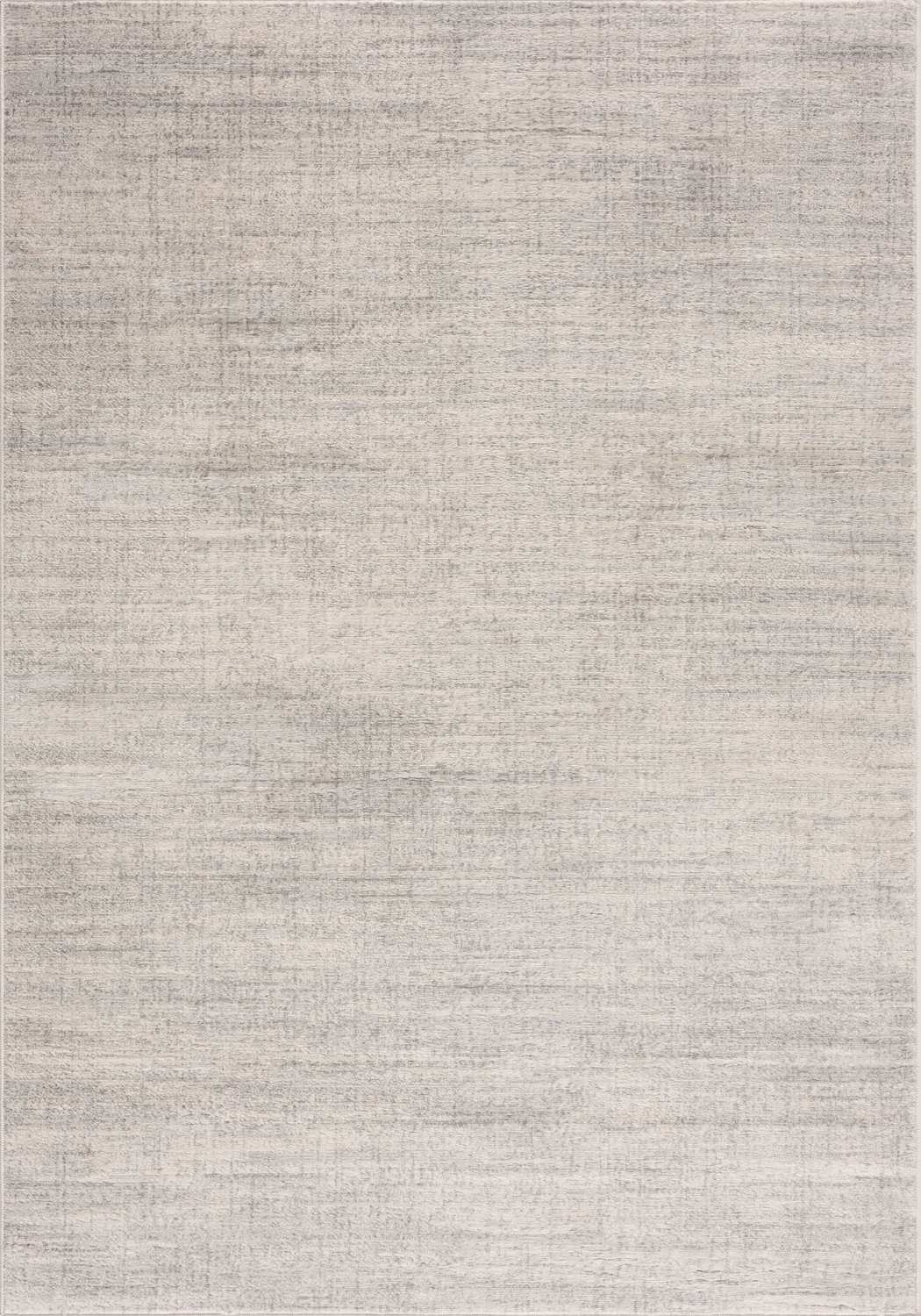
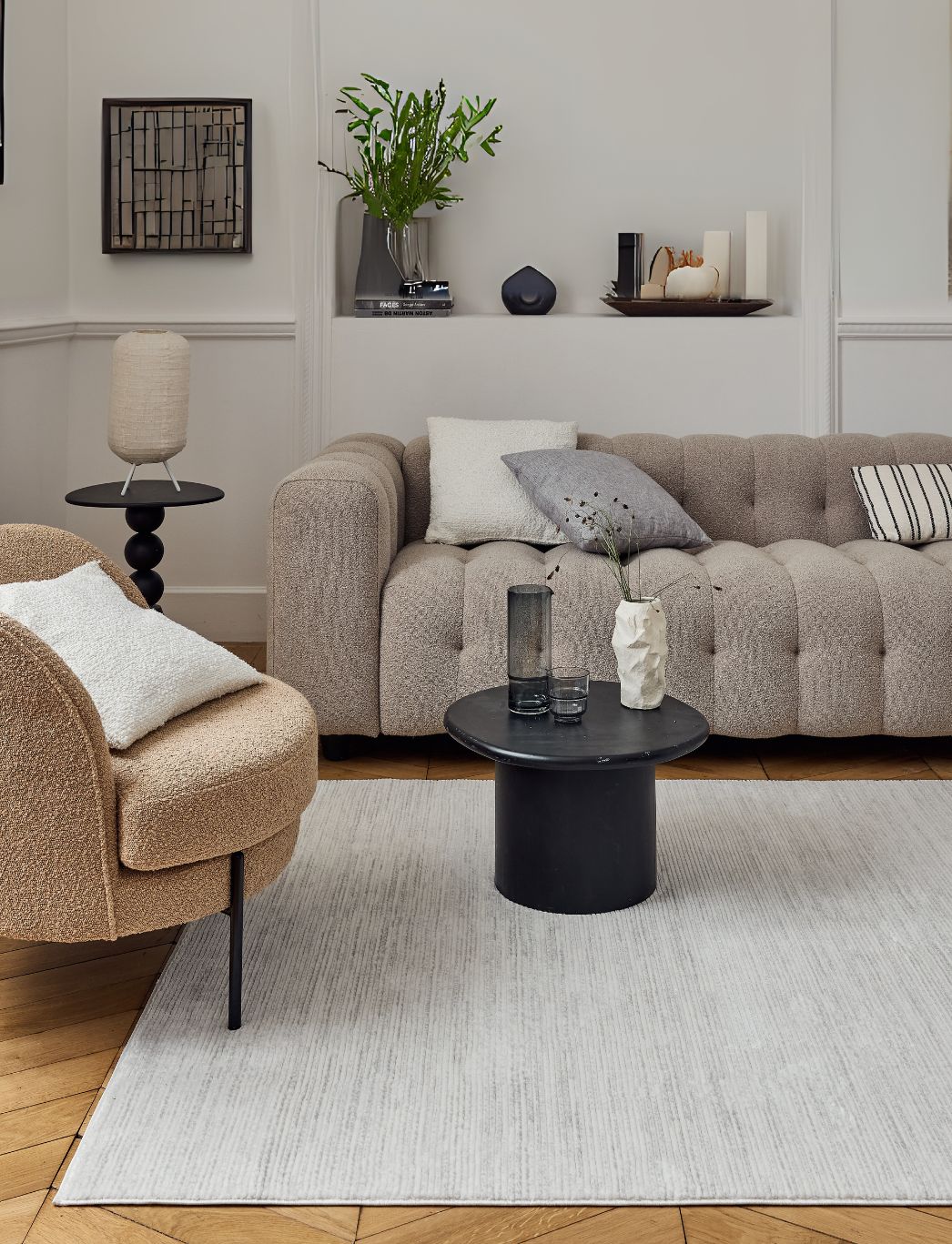
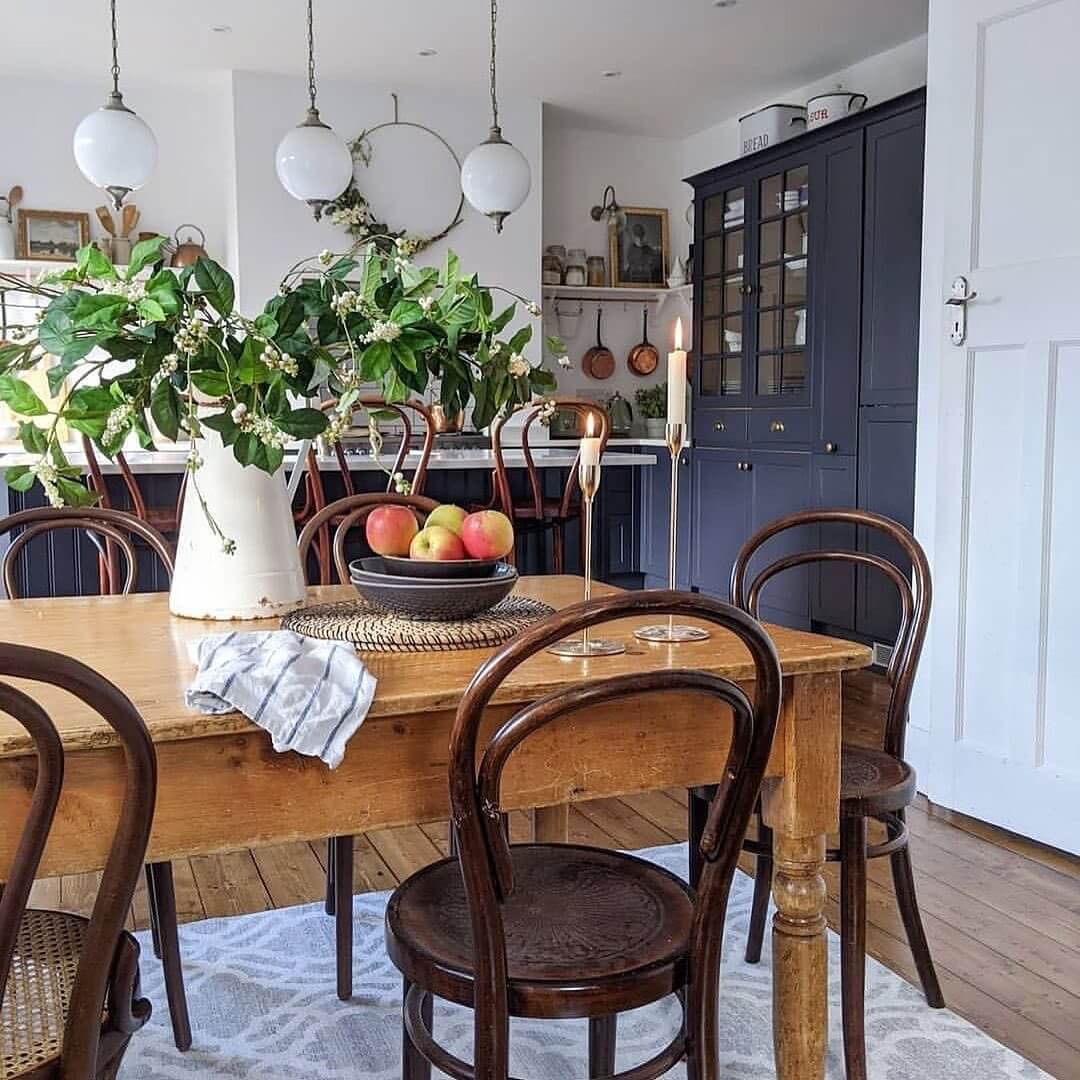
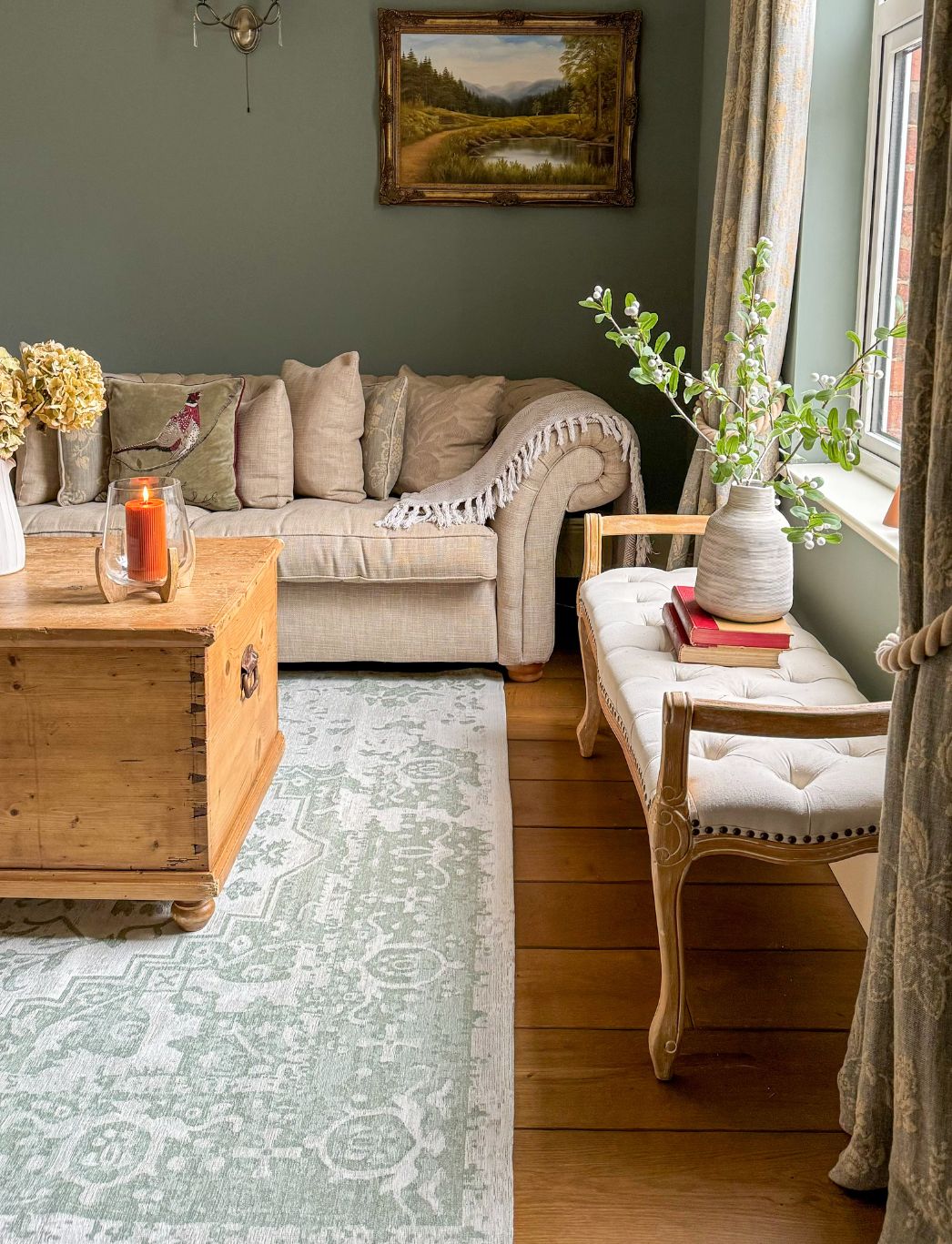
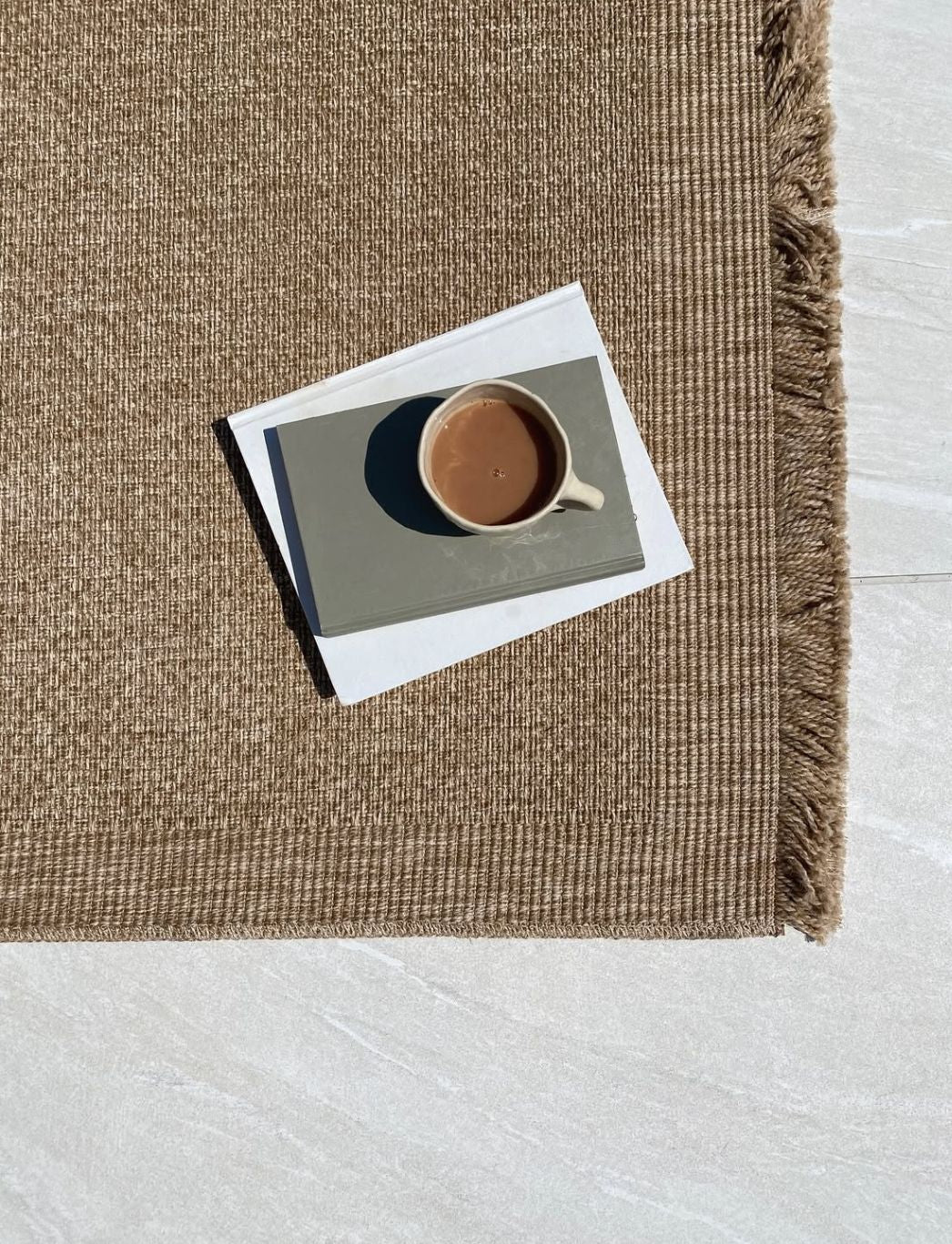
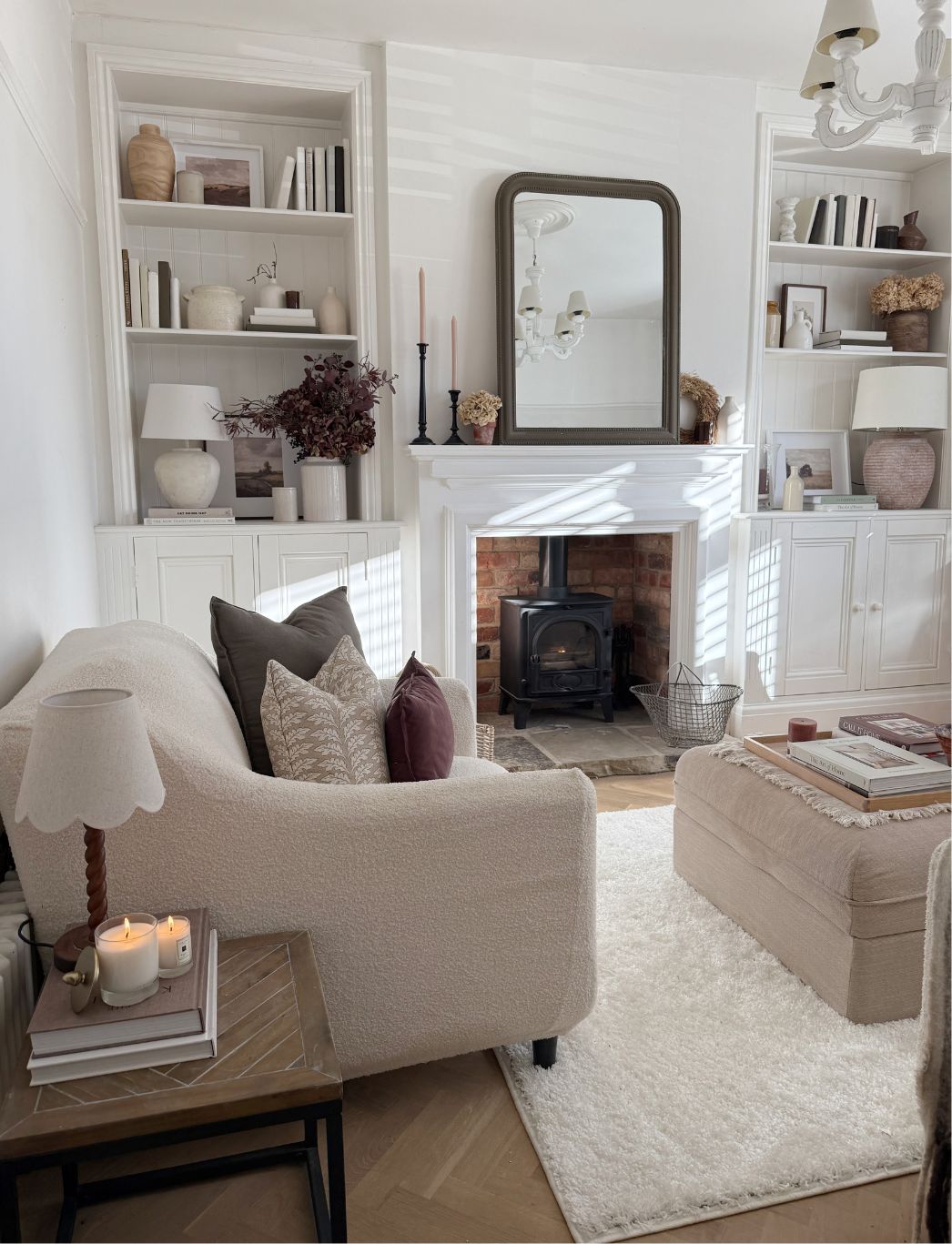
Leave a comment